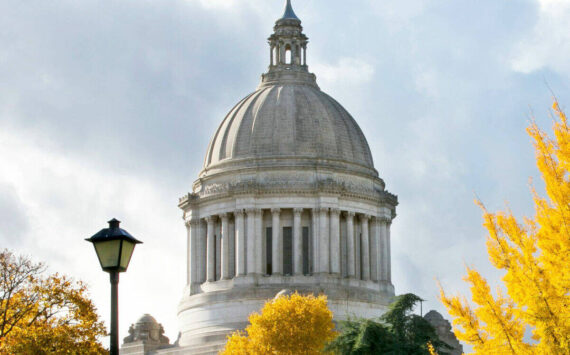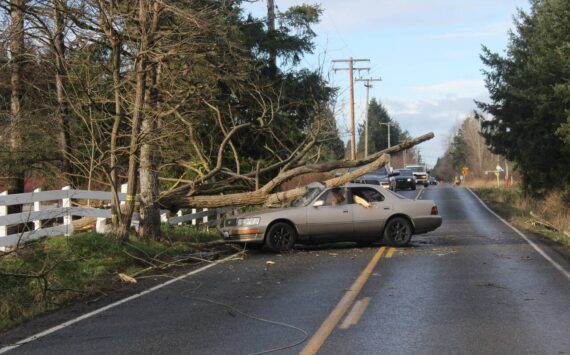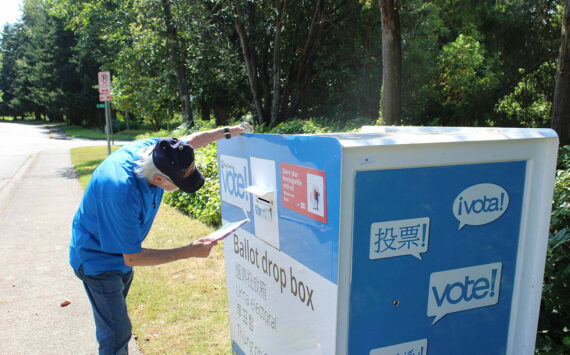“At right, an architectural rendition of the proposed Thea Foss Marina project. On Monday, State Commissioner of Public Lands, Jennifer Belcher, signed a 30-year lease to Gateway Marine LLC for a $55 million development project at Thea Foss Marina on the Thea Foss Waterway.The critical development project hinged on approval of the lease by the state Department of Natural Resources, which owns the tidelands under the moorage area. The lease agreement contains several key conditions to protect the state’s tidelands, and Gateway will pay approximately $50,000 per year for the lease.I haven’t read this and I never sign anything until I read it, joked Commissioner Belcher with well-wishers gathered at the Foss Waterway Development Authority offices. I am really delighted to bring this project to the point of conclusion. The redevelopment is an important part of Tacoma’s waterfront.We’ve come a long way in this project, added Ted Johnson, a partner with Simon/Johnson who signed the document on behalf of Gateway Marine LLC. We started in July of 1997 and hard no idea it would be so involved, but it will be worthwhile.When asked, Johnson said the 1,000 foot stretch of marina would include 30 high-end condos ($450,000-range for each), with 2,000 square feet in each.There are plans for plenty of parking and the total square footage for retail/residential/office space will be about 258,552 square feet. The signing of the agreement was one of Belcher’s last official acts as commissioner of Public Lands. She was elected for the position in 1992, and re-elected in 1996. On Wednesday at noon, the newly elected commissioner, Doug Sutherland, will take her place.It will be another 18 months before ground is broken to begin construction on the newest approved portion of the overall marina project. Once complete, the Thea Foss Waterway will be the longest waterfront walkway in the nation.History of the Thea Foss WaterwayIn 1991, the City of Tacoma and the Metropolitan Park District purchased nearly 27 acres of property on the western side of the Thea Foss Waterway for $6.8 million. The City, in the unfamiliar role of property developer, hoped to eventually turn the barren land into a residential, commercial and recreational area linking downtown Tacoma and the Ruston Way shoreline to the north of downtown.The city’s plans for this former industrial area had one overriding thing in mind – public access to the 1.5 miles of waterfront walkway, with public event plazas, marinas, shops and cultural centers stretching along the Thea Foss Waterway’s western shore. The design for the first portion of the development – directly below the Washington State History Museum and in the area that will become home to the glass museum – was approved in late 1996. In that same year, the city council voted to create the seven-member Foss Waterway Public Development Authority, a group of development professionals, to oversee redevelopment.Another major key to the development of Tacoma’s waterway is the Thea Foss Waterway Esplanade which, according to information from the architectural web site maintained by Bruce Dees & Associates, represents a major chapter in the revitalization of downtown Tacoma. The esplanade, which will stretch along the entire one and one-half miles of the western side of the Thea Foss Waterway, will reconnect the downtown business district and the Union Station Historical District to the waterfront.The design team on the esplanade project was led by Architects Reed Reinvald Johnson Willows in association with the Zimmer Gunsul Frasca Partnership. Bruce Dees & Associates was a core design team member, charged with creating a master plan for the llinear park and urban revitalization project. Developing the Thea Foss waterway offered Tacoma a unique set of challenges and opportunities. Numerous federal, state and local agencies have a say in what happens in and around the waterway. In addition, the land itself carried the stigma of contamination and the threat of future liability for potential developers.When City leaders sat down to map their strategy for tackling the environmental and redevelopment issues, they vowed to take a different approach– collaborative rather than confrontational. The approach paid off. With everyone at the negotiating table, including numerous federal, state and local regulatory agencies, the group agreed to a new strategy: allow the kind of development proposed for each site to determine the extent of environmental cleanup. And the Foss agreement set another new national trend – the Washington State Department of Ecology would allow upland cleanup to be delayed until development took place.Today, Tacomans can see the first new stirrings along the Thea Foss Waterway. On land, one 1.6-acre site, slated for the Museum of Glass, has already been scrubbed clean and construction at the site has begun. Hammered out with the community, federal and local officials, the cleanup plan for other portions of the Foss calls for a three-foot soil cap over park areas on land with a thicker, 6-inch impervious paving over developed areas. In the water, the City is analyzing a cleanup option that would dredge contaminated soil from the bottom of parts of the waterway and lay a cap of clean sand at the head. Clean-up plans are on track to begin in summer 2001.Public input also played a significant role in formulating a plan for what the future Foss would look like. Public meeting notices drew in more than 900 citizens. More than 40 community meetings tapped the public’s creative psyche. “
Marina project gets final seal of approval from Public Lands commissioner
Tags: Architects Reed Reinvald Johnson Willows, architectural web site, Bruce Dees & Associates, commissioner, Department of Natural Resources, Doug Sutherland, Foss, Foss Waterway Development Authority, Foss Waterway Public Development Authority, Gateway Marine LLC, Jennifer Belcher, Metropolitan Park District, Museum of Glass, newly elected commissioner, Public Lands, retail/residential/office space, Simon/Johnson, soil, State Commissioner, Tacoma, team member, Ted Johnson, Thea Foss Marina, USD, Washington State Department, Washington State History Museum, Zimmer Gunsul Frasca Partnership




